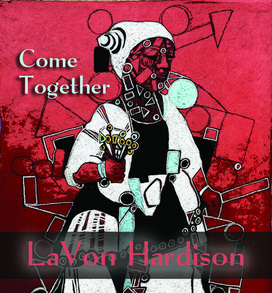
Describing the track list, Hardison says “I was really excited to be able to mix Jazz standards with other songs. Instead of trying to choose songs from a particular genre, I chose songs that have a melody or meaning that tell a story.”
And she chose well. Moving from John Lennon to Billy Strayhorn to Burt Bacharach, she cannot be charged with limiting herself. Indeed, she stretches boundaries in creating meaningful Jazz pieces out of pop hits. She creates an extraordinarily encompassing album of songs we loved during their time but may have set aside. Hardison has taken those songs and pulled them forward and breathed a fresher—dare I say more meaningful?—life than ever known until rendered as Jazz pieces. Somewhere, John Lennon is grinning.
With Ms. Hardison is David Joyner on piano and piano, Osama Afifi on bass, Jeff Busch on drums and Brad Schrandt on flute and sax. These guys add the fire to Hardison’s smoke.
She opens the album with Tomorrow (Strouse and Charnin, composers) from the musical Annie. Forget the little kids from before. Hardison makes this an optimistic piece for adults. The gorgeous flute of Schrandt and the cool rhythm section set up the wonderful and captivating vocals of Hardison. A bit of Caribbean swing enters and the vocal of Hardison just carry you away.
Sunny is turned over to a cut-tempo groove and the soulful intonations of Hardison make this a smoldering remembrance of love and gratitude. Afifi’s bass delivery is excellent with his smooth lines and full stops. Joyner’s piano solo is a bluesy interlude before the piece erupts into a last-minute quick-stepping memory of the original but Hardison’s intonations are just so fine.
Billy Strayhorn’s Maybe is a more straight-up Jazz delivery, like the original. Then again, Strayhorn defined Jazz in many ways so how does one Jazz up a Jazz master? Still, Hardison’s delivery is sweet and sassy. Hearing her smiling through her singing is delightful.
Then comes the unexpected. The Afro-Cuban rhythmic introduction of Jeff Busch with Afifi’s cool-as-can-be bass does not prepare you for the oh-so-familiar opening lyrics “Here come ol’ flat-top…” The piano takes on a little Gospel delivery and rhythm section continues the smoking Latin groove. Hardison takes the psychedelic lyrics and delivers a psycho-Jazz-Blues-Gospel vocal that can only bring a smile. I hit replay on this so many times, my wife walked in and said “Wow, you REALLY like this one, don’t you?” Who wouldn’t? I mean she delivers separate lines in separate intonations. “Here come ol’ flat-top/ He come grooving up slowly” is a Jazz voice. “Got to be a joker/He just do what he please” is Blues and “Come together right now over me” is pure Gospel. John Lennon never imagined Come Together like this. Good God, ya’ll, this was wonderful!
The Burt Bacharach/Hal David number Alfie follows next. The song from the 60s movie of the same name starring Michael Caine was locked into the 60s with no escape…until LaVon Hardison. Bacharach and David wrote charming pieces, to be sure, but Hardison takes a straight Jazz approach and the band is dialed in with her. Joyner’s piano solo is perfectly stated and the rhythm section keeps a cool swing in motion.
Unchain My Heart (Sharp and Powell, composers) was made famous by Ray Charles, the Master himself. She says, “Ray Charles is a huge influence on me. He managed to do country, R&B, whatever—and he always understood the song and made it his own.” The very same thing can be said about Hardison herself, she makes each song her own.
Hardison sees no need—and neither do I—to venture too far afield from the original. What she does, however, is to deliver a sultrier Blues. Charles was strident, Hardison is smoky. The ever-identifiable groove is delivered beautifully by Afifi and Busch. Schrandt contributes a fine sax solo that heightens the Blues feel. Hardison’s laughing-through-the-pain final lines are rich.
Better Than Anything (Loughborough/Wheat, composers) is a spot-on Jazz delivery of the catalogue of beloved things and Jazz wonders. “Better than four sets of Dizzy/ Better than Count Basie’s band/ Better than Rollins and Coltrane bein’ on the stand/ Better than Ella Fitzgerald/ Better than Miles latest news/ Bill Evans’ ballads and Joe Williams’ Blues.” All this is better than anything except being in love. Although I’m not sure about Coltrane and Bill Evans…
Now, while listening to those delightful lyrics and Hardison’s stunning delivery, don’t ignore the cool swing of the band and what these guys are playing behind. Hardison has picked these guys for a reason and they deliver.
Another Bacharach/David piece, (They Long to Be) Close to You—made famous by the Carpenters—makes an appearance. Even the most brain-dead head-banger has to admit a secret love for this song. Hardison deserves a shout of gratitude for resurrecting such a fine song, especially when it is delivered in such beautiful Jazz styling. Hardison’s bent-notes are gorgeous. It made me remember my fondness for the original but it also made think that Hardison has recreated the song in a completely complementary fashion that deserves to be remembered in this approach as much as the original. Again, pay attention to the band also because they have all contributed to this delightful sound.
Some Other Time (Comden/Green/Bernstein, composers) can only be called wonderful. From the opening lines of the solo piano, the piece is a work of utter beauty. A ballad of lost time and a hope for another chance, the Bernstein music is sweet and a bit melancholy. The song is done so well.
It is a fitting piece to close the album. It is as if LaVon is telling her audience that, yes, it has been eight years since her last album and the 35 minutes of this album is not enough to catch up. But the catching up will have to wait for some other time.
I’m not sure I ever fell in love with someone as quickly and irrevocably as with LaVon Hardison. Being raised in the Gospel of the church, being trained in the opera, now delivering Jazz vocals difficult to compare, and with a band that knows how to create what LaVon envisions, has given her all she needs to give her audience an experience of joy, passion, fun and…let me say it…love.
~Travis Rogers, Jr. is The Jazz Owl
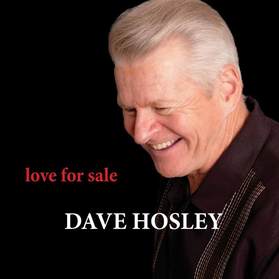

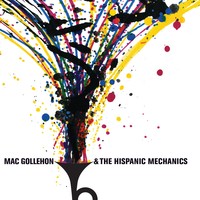
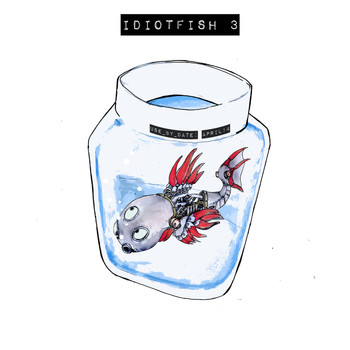



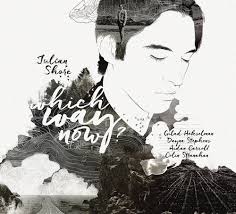

 RSS Feed
RSS Feed
